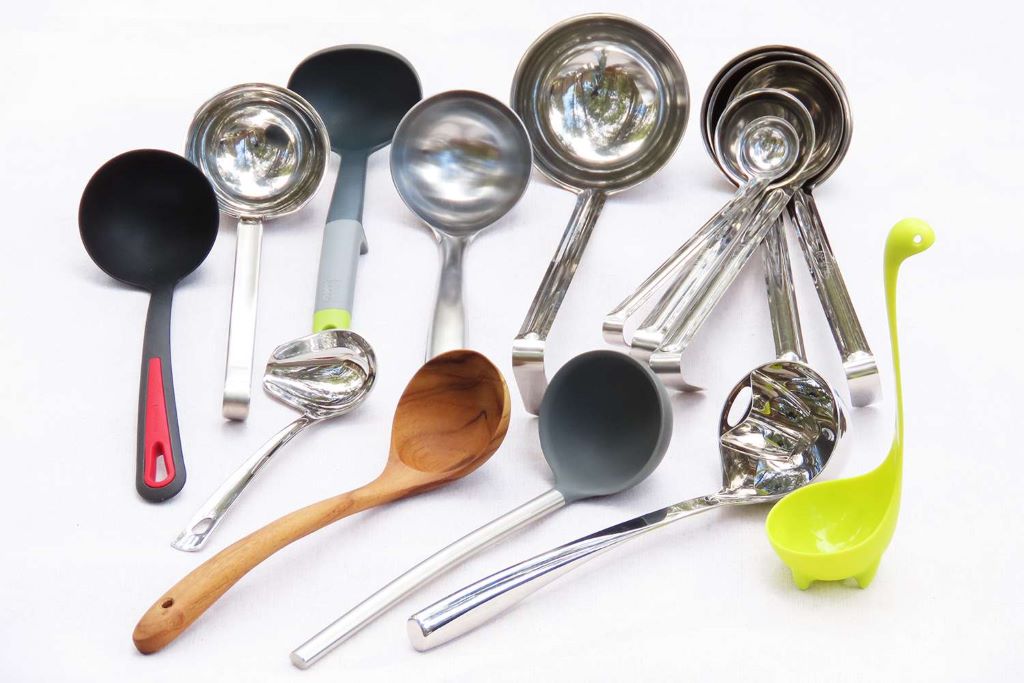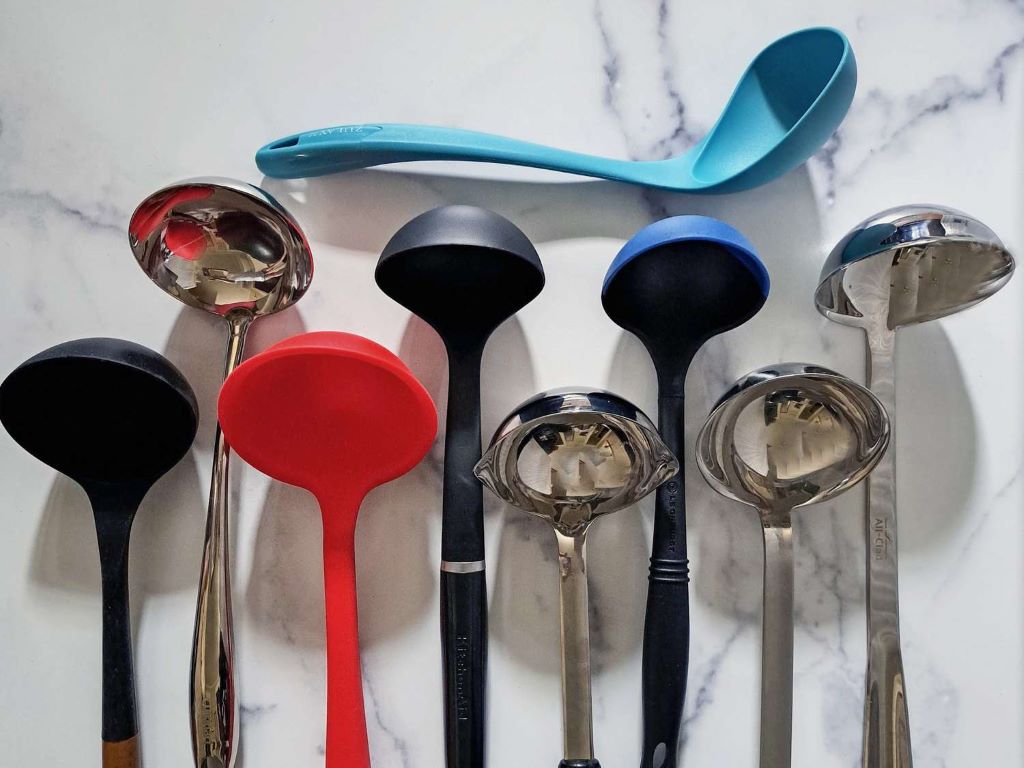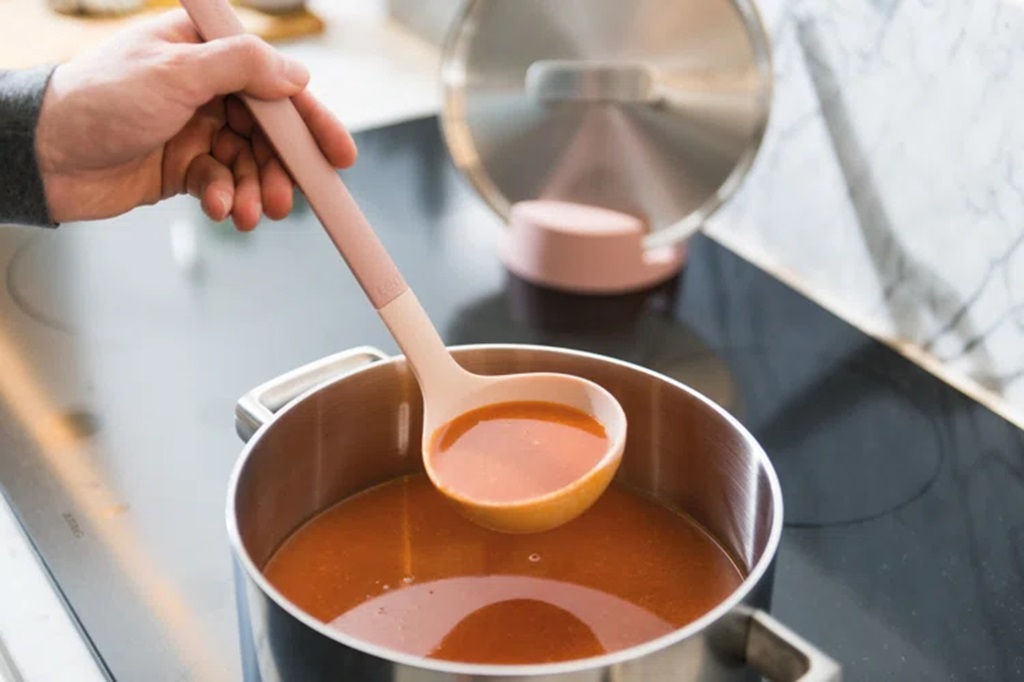How to Clean and Care for Your Soup Ladle
Ladles are the unsung heroes of the kitchen, quietly helping us scoop, pour, and serve delicious soups and stews. But just like any kitchen tool, they need some TLC to keep them in tip-top shape. In this guide, we’ll walk you through the art of cleaning and caring for your trusty soup ladle. Think of it as giving your kitchen buddy a spa day – it deserves it!
Why Does Your Soup Ladle Need Care?
Before we dive into the cleaning and care routine, let’s talk about why it’s essential to pamper your ladle. Just like a car needs regular maintenance to run smoothly, your ladle needs some attention too.
- Hygiene: Ladles come into direct contact with your food. Ensuring they are clean and free from bacteria is crucial for your health and the health of your loved ones.
- Longevity: A well-cared-for ladle will last longer. You wouldn’t want your favorite kitchen tool to wear out prematurely, would you?
- Flavor Preservation: Residue from previous dishes can affect the taste of your current creation. Proper cleaning ensures you get the flavors you intended.
Now that we understand why ladle care is important, let’s get down to the nitty-gritty.

The Basics of Cleaning Your Soup Ladle
Cleaning your soup ladle doesn’t have to be a daunting task. With the right approach and a little elbow grease, you can keep it sparkling clean. Here’s a step-by-step guide to get you started:
Step 1: Gather Your Supplies
- Warm water
- Dish soap
- Soft sponge or cloth
- Toothbrush (optional)
- Baking soda (for tough stains, if needed)
Step 2: Pre-Rinse
Before diving into the cleaning process, give your ladle a quick rinse under warm running water. This helps remove any loose food particles and makes the cleaning process more manageable.
Step 3: Soapy Soak
Fill your sink or a bowl with warm water and add a few drops of dish soap. Place your ladle in the soapy water and let it soak for about 10-15 minutes. This helps loosen up any stubborn residue.
Step 4: Gentle Scrubbing
Using a soft sponge or cloth, start gently scrubbing the ladle’s surface. Pay close attention to any areas with food residue. For hard-to-reach spots, you can use a toothbrush to get into the nooks and crannies.
Step 5: Rinse Thoroughly
Once you’ve removed all traces of food and soap, rinse the ladle under warm running water. Ensure there are no lingering soap suds left behind.
Step 6: Dry Properly
After rinsing, pat your ladle dry with a clean towel or let it air dry on a dish rack. Avoid leaving it in a damp environment, as this can lead to rusting over time.
Step 7: Optional: Baking Soda for Tough Stains
If your ladle has stubborn stains or discoloration, make a paste with baking soda and water. Apply this paste to the affected areas and let it sit for a few minutes before scrubbing with a soft cloth. Rinse thoroughly and dry as usual.
Special Considerations for Different Ladle Materials
Not all ladles are created equal, and different materials require slightly different care. Let’s explore how to clean and care for ladles made of various materials:
Stainless Steel Ladles
Stainless steel ladles are durable and resistant to rust and staining, making them a popular choice. Cleaning them is relatively straightforward:
- Avoid abrasive scrubbers or steel wool, as they can scratch the surface.
- If your stainless steel ladle develops minor discoloration, you can use a mixture of equal parts water and vinegar to restore its shine.
Plastic Ladles
Plastic ladles are lightweight and often come in fun colors. To keep them in good condition:
- Avoid using them with hot liquids, as plastic can melt.
- Be cautious when using colorful plastic ladles with acidic ingredients, as they may stain over time.
Wooden Ladles
Wooden ladles add a rustic touch to your kitchen but require some extra care:
- Never soak wooden ladles in water or put them in the dishwasher, as this can cause warping and splitting.
- Hand wash wooden ladles with mild dish soap, rinse thoroughly, and dry them promptly.
Silicone Ladles
Silicone ladles are heat-resistant and gentle on non-stick cookware:
- They are dishwasher safe, but hand washing is still recommended to prolong their lifespan.
Copper Ladles
Copper ladles have a classic charm but need some TLC to maintain their luster:
- Avoid using abrasive materials, as they can scratch the delicate copper surface.
- To restore shine, mix equal parts salt and vinegar and gently rub the ladle. Rinse and dry thoroughly.

Preventative Measures for Ladle Care
Cleaning is just one part of ladle care. To keep your ladles in great condition for years to come, consider these preventative measures:
1. Use Appropriate Utensils
Use ladles for their intended purposes. Avoid using metal ladles in non-stick pans, as they can damage the coating. Using the right tool for the job will extend the life of both your ladles and your cookware.
2. Store Properly
Store your ladles in a way that prevents them from coming into contact with other utensils. Hanging them on hooks or using a utensil organizer can help prevent scratches and damage.
3. Avoid High Heat
While some ladles are heat-resistant, it’s still best to avoid exposing them to extremely high temperatures, as it can cause warping or melting, especially with plastic or silicone ladles.
4. Regular Inspections
Give your ladles a quick once-over before each use. Check for any signs of wear, rust, or damage. Catching issues early can prevent further deterioration.
FAQs
- Can I put my ladles in the dishwasher?
While some ladles are dishwasher safe, it’s generally better to hand wash them. Dishwashers can be harsh on utensils, especially those made of wood, plastic, or with delicate coatings.
- How do I remove rust from my ladle?
For stainless steel or copper ladles, mix a paste of baking soda and water, apply it to the rust spots, and scrub gently with a soft cloth. Rinse thoroughly and dry. For wooden ladles, you may need to sand off the rust carefully.
- Can I use my ladle for both hot and cold dishes?
Yes, most ladles are versatile and can be used for both hot and cold dishes. However, be mindful of ladles made of plastic or silicone, as they may not be heat-resistant and could melt when exposed to high temperatures.
- Is there a way to prevent wooden ladles from splitting or warping?
To prevent wooden ladles from splitting or warping, avoid soaking them in water for extended periods and never put them in the dishwasher. Hand wash them with mild dish soap, rinse thoroughly, and dry them promptly.
- How often should I clean my ladles?
Ideally, you should clean your ladles after each use to prevent food residue from drying and becoming harder to remove. Regular cleaning will also help maintain their appearance and hygiene.
Conclusion
Your soup ladle may not be the most glamorous kitchen tool, but it plays a vital role in creating delicious meals. When learning how to organize a small kitchen, remember that by following these simple cleaning and care tips, you can ensure your ladle stays in top-notch condition, ready to serve up piping hot soups and savory stews for years to come while maximizing your kitchen’s limited space. So, show your ladle some love, and it will reward you with many more delectable dishes in the future.












Post Comment